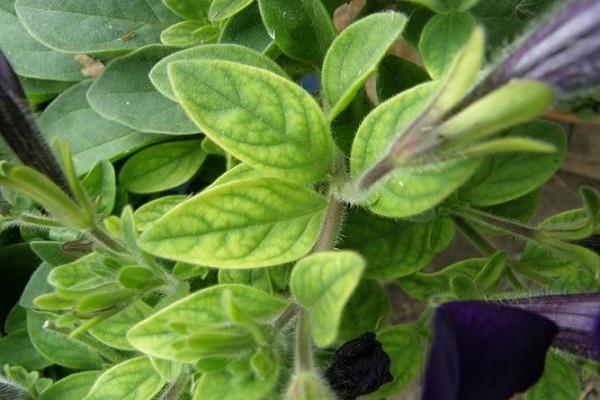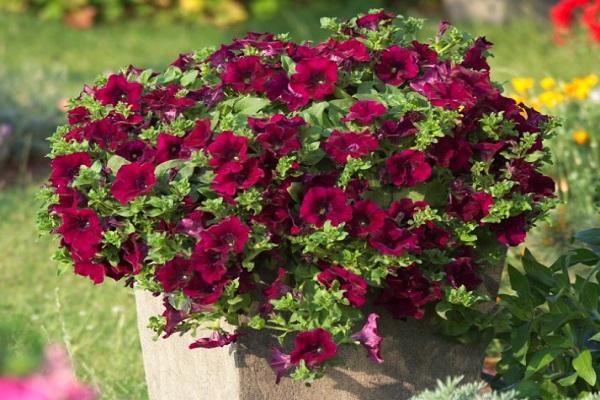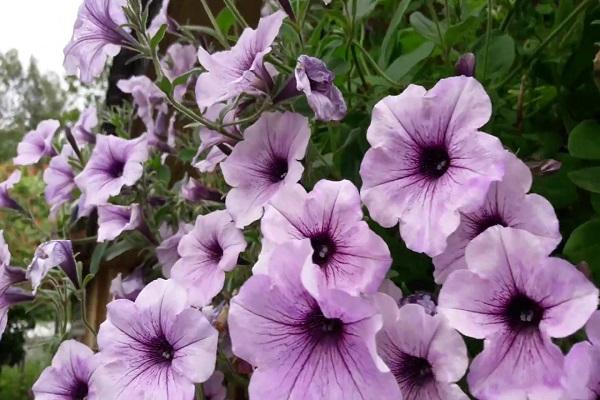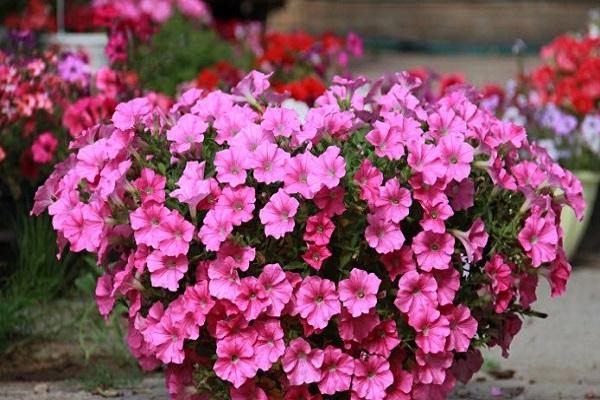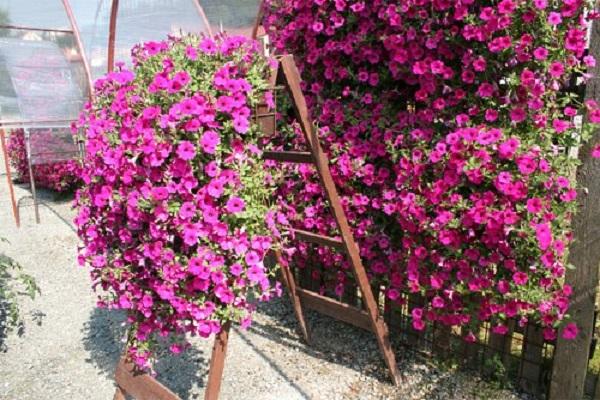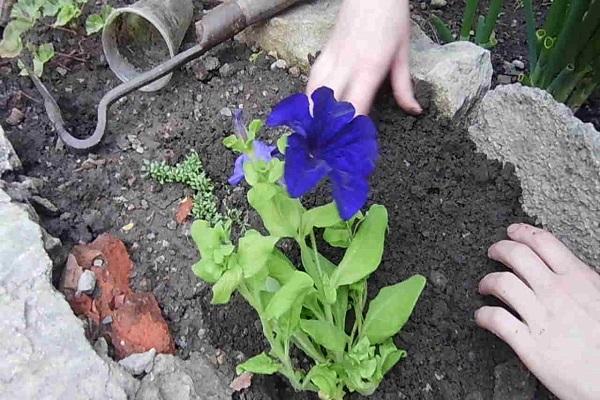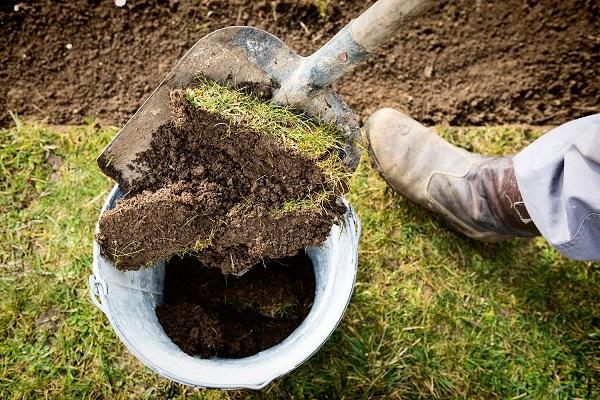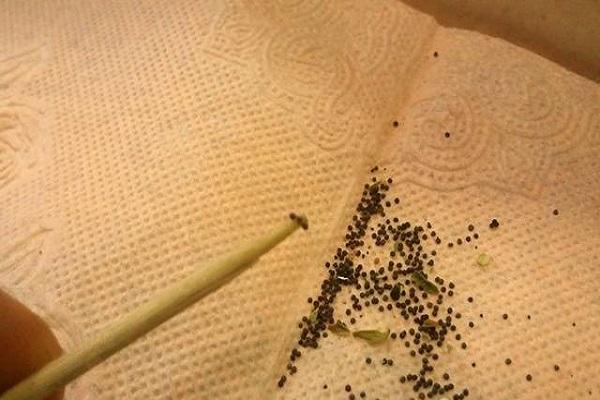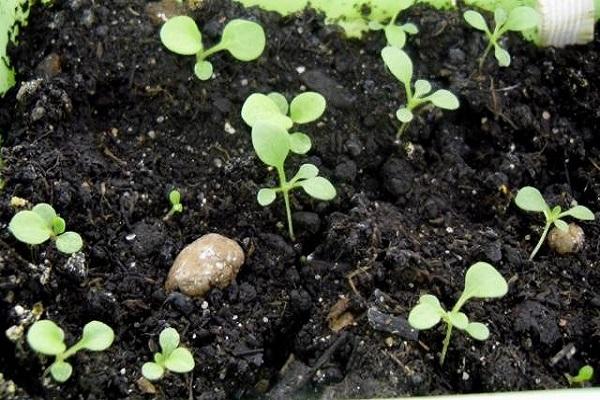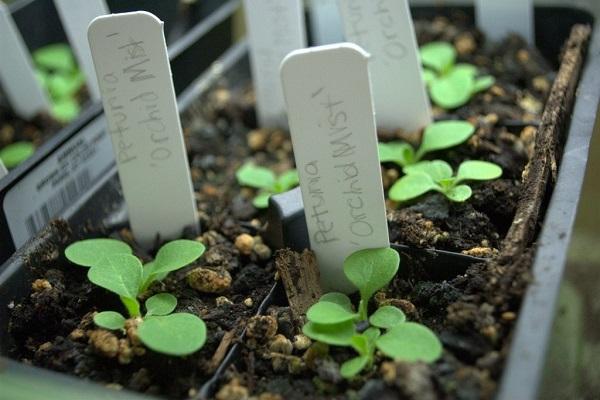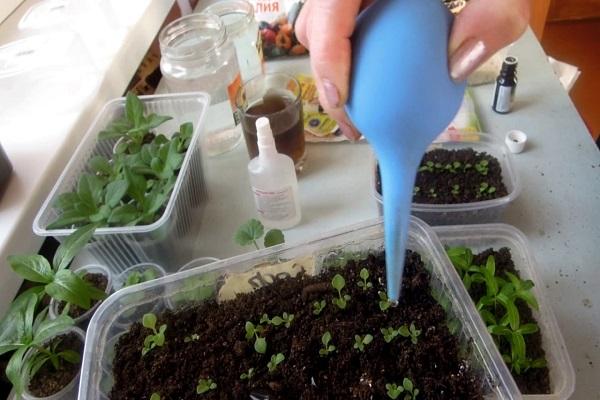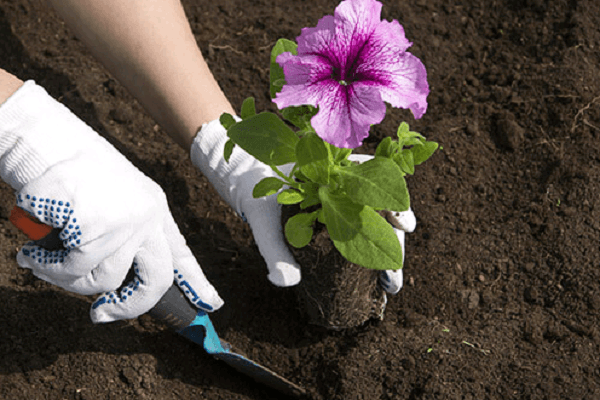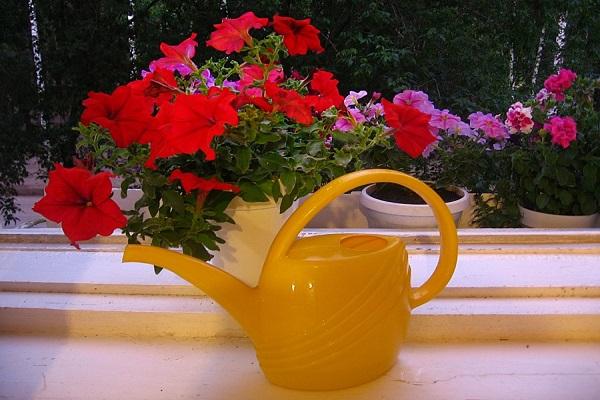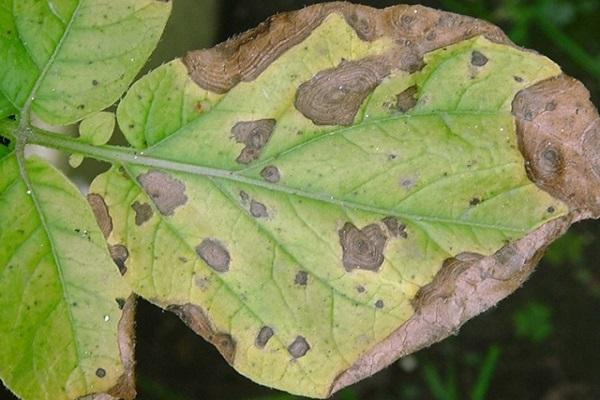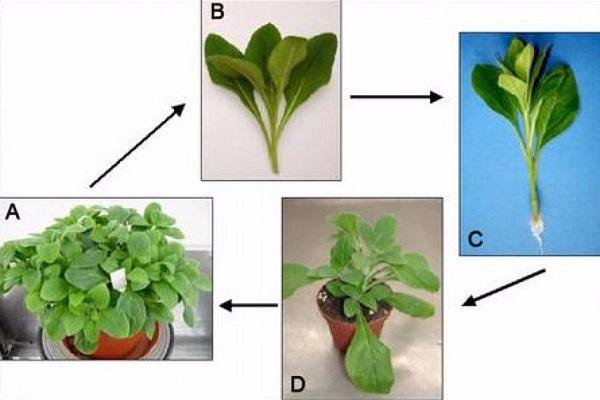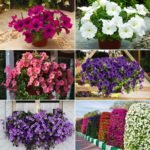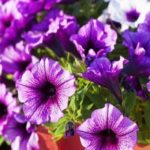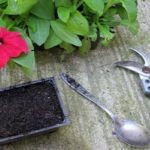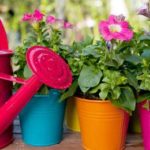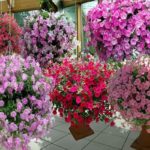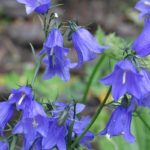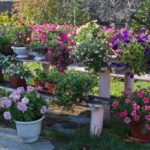Cascade petunia is characterized by a varied palette of bright, rich colors, as well as a long flowering period. This popular ornamental plant decorates gardens and personal plots, terraces, balconies and pillars. It is also suitable for indoors. Growing unpretentious and cold-resistant petunia is easy, so even novice gardeners readily choose it.
- Description and features
- Varieties
- With flexible, strong side stems that grow downward
- With stems that grow upward
- Semi-ampels with short lashes (super cascade)
- Popular varieties
- Surfinia
- Conchita
- Fortunia
- Ramblin'
- Typhoon
- Tornado
- Rose
- Surf
- Gioconda
- Cascade
- Niagara
- What they love
- Choosing a landing site
- Temperature
- Lighting
- Humidity
- Pots for growing
- How to plant
- Soil requirements
- Sowing dates
- How to plant
- Temperature and light conditions
- Ventilation
- Rules for caring for seedlings
- Watering
- Pallet
- Under the root
- Dive
- Top dressing
- Planting in open ground
- How to care for an adult plant
- Features of watering
- How to feed correctly
- Topping
- Diseases and pests
- Fungi
- Late blight
- Aphid
- Reproduction
- Seed method
- Vegetative method
Description and features
Cascade petunia was developed in the 60s of the 20th century through hybridization at the cellular level. This is a subspecies ampelous petunia with its own unique features. It is characterized by strong and elastic long shoots that do not break from strong winds. Initially, the petunia stems stretch upward, and then, becoming heavier, they begin to smoothly fall. Important advantages are unpretentiousness and cold resistance.
Varieties
Plant species differ in the size of the bushes and the direction of growth.
With flexible, strong side stems that grow downward
The shoots of this flower variety are characterized by both strength and flexibility. The lateral stems of the petunia, directed downwards, grow, forming a thick “curtain”.
With stems that grow upward
The second variety of cascading petunia is characterized by stems growing upward. Only when they reach a significant length do they begin to grow downwards or to the side. The large buds of this flower are the same size. The plant's cap is very voluminous, and therefore it requires a lot of space. Can be used as a ground cover plant.
Semi-ampels with short lashes (super cascade)
Semi-ampeloid petunia has short stems, but thanks to the branching they look voluminous. Reaching 12 centimeters in diameter, large flowers are formed into spectacular and harmonious cascades.
Popular varieties
Among the variety of varieties, each gardener will be able to choose the appropriate option.
Surfinia
One of the most interesting hybrid varieties of petunia is Surfinia. Bright and attractive flowers on long and strong stems are collected in a bunch. Their shades are varied - pink, snow-white, dark red, purple and yellow.
Conchita
This species is characterized by medium-sized flowers of various colors - white with a greenish throat, dark crimson and soft lilac. The surface of the petals is silky or terry.
Fortunia
This is a low but strongly branching shrub with long shoots. The falling branches reach one meter in length. Flowers collected in inflorescences have a diameter of up to 7 centimeters. They densely dot the stems, creating the impression of a solid flower ball. The colors include both warm and cool tones.
Ramblin'
The large-flowered variety of petunia Ramblin is spectacular and attractive, it is characterized by strong growth. The bush is round in shape and dotted with small flowers.
Typhoon
The cascade petunia variety Typhoon has a specific bush shape - with a branch height of up to twenty centimeters and a leaf diameter of up to thirteen. The shades of flowers are snow-white, scarlet and brown. This variety has difficulty withstanding cold weather, and is also capricious regarding the quality and composition of the soil.
Tornado
Cascade petunia Tornado is characterized by rapid growth and significant power of tall stems. The color of the flowers is very beautiful - white with silver.
Rose
Rose is often planted as a dense flower carpet. A distinctive feature of this cascading petunia is its medium-sized flowers of expressive pink color.
Surf
The Priboy variety is represented by two subspecies - Pearl Surf and Lilac Surf. They have spreading branches, dense foliage and abundant long-lasting flowering. The first type of petunia is white with a pearly coating, and the second is pale purple.
Gioconda
One of the most charming varieties of cascading petunia is called Gioconda. At the same time, it is very easy to care for, which makes it extremely popular. This plant is grown in pots and used mainly to decorate vertical flower beds. The low, neat bush is strewn with numerous flowers in luxurious shades - white, pink, scarlet, purple, orange, neon, salmon and violet. In addition to external beauty, this variety is characterized by increased resistance to temperature changes and diseases.
Cascade
Cascade is a popular variety that combines compact bushes and large flowers. The petals are corrugated and densely double. This plant is characterized by early and abundant flowering, as well as resistance to drought and cold. Flower colors can be pink, lilac, crimson and blue.
Niagara
The Niagara variety is distinguished by large flowers, up to 7 centimeters in diameter, with smooth satin petals. Medium-sized bush - up to 45 centimeters in height. The varied colors look very harmonious thanks to the combination of white, lilac, dark purple and purple shades.
What they love
Petunia, coming from countries with a predominant hot and humid climate, loves long daylight hours, warm air and plenty of moisture.Hybrid varieties, bred as a result of careful selection, are characterized by good adaptation to almost any weather conditions.
Choosing a landing site
Before planting, a suitable site is selected.
Temperature
Cascade petunia is sensitive to too high air temperatures, but it easily tolerates frosts down to -10 ° C.
Lighting
You need to choose an open sunny place for cascading petunia, as this plant is warm and light-loving. On balconies or windows it should be planted on the south or southwest side. Shady areas should be avoided, since under such conditions the shoots become elongated, the number and size of flowers noticeably decreases, and leaves, on the contrary, increase.
Humidity
Petunia is not afraid of drought and high humidity. Stagnation of water is detrimental to it, so it should not be allowed.
Pots for growing
For growing cascade petunias Medium and large containers should be used. There should be special holes at the bottom to drain excess moisture. In the first case, you should not plant more than one plant in one pot with a volume of up to 5 liters. To plant two or three specimens, you will need a large, spacious pot - 10-15 liters, in which the flowers will feel free and not create obstacles to each other’s growth.
The optimal distance between the stems is 15-20 centimeters.
How to plant
When planting a plant, it is necessary to follow the recommended timing, take into account the characteristics of the soil, as well as the requirements for temperature and light conditions.
Soil requirements
In order for the petunia root system to develop properly, loose and light soil with breathable properties and neutral acidity is required.For these purposes, you can purchase ready-made soil with the addition of special baking powder at a flower shop.
You can also prepare the composition yourself by mixing the following components in equal proportions:
- turf land;
- peat;
- sand;
- humus.
No less effective is soil consisting of deciduous and turf soil, peat and coarse river sand.
In order for the soil to retain moisture, you need to lay a layer of expanded clay at the bottom of the pot.
Sowing dates
The optimal period for sowing cascade petunia is February or March.
How to plant
The container must be filled with soil so that 1-1.5 centimeters remain to the edge. Petunia seeds should be evenly distributed over the entire surface of the substrate. Sprinkling with soil is not required, as this will only create an obstacle to germination.
Since this plant has very small seeds that are difficult to see on the soil surface, you can first add a layer of snow and then distribute them on top. Subsequently, the snow will melt and moisten the soil.
After sifting the petunia seeds, it is recommended to lightly sprinkle them with water and then cover them with glass, agricultural textiles or plain paper. Instead of pots, you can initially use plastic food containers with airtight lids.
Temperature and light conditions
This plant needs plenty of light, so at certain times of the day it may need additional lighting. A fluorescent lamp is quite suitable for these purposes.
The optimal air temperature level is from +20 to +23 degrees Celsius.
Ventilation
Crops need to be ventilated daily for fifteen minutes, and the level of soil moisture must be kept under control.
Rules for caring for seedlings
In order for petunia seedlings to actively grow and be healthy, it is necessary to provide them with adequate care, combining regular watering and nutritious feeding.
Watering
As soon as the leaves of the seedlings touch the glass or lid, the container must be opened and the first watering performed. Overdrying the soil and oversaturating it with moisture are equally dangerous for the plant, so it is important to observe moderation. It is recommended to water petunia in a tray or under the root, but its leaves should not be moistened.
Pallet
The method of watering seedlings from a tray is preferable, as it prevents root rotting. To do this, you need to fill the pan with water, and then place the container with the plant in it. Leave for 30-40 minutes and drain off excess water.
Under the root
Watering the seedlings at the root should be done using a watering can with a thin long spout so as not to wet the leaves. The stream should be moderate - for this, the watering can should be held at a low height above the seedlings.
Dive
Petunia bushes will grow healthy and beautiful if you pick the seedlings in a timely manner. It is recommended to perform this procedure twice. The first time - three weeks after sowing in the same containers. The second time - another week later in separate small containers or cups.
You can also perform a single pick after the formation of at least two leaves on each seedling.
Top dressing
Two weeks after sowing, the first shoots will appear. The time has come to introduce the first feeding of petunia. Weak solutions of potassium permanganate or fungicide have proven effective. After picking, it is also necessary to feed the plants using solutions that promote rapid root formation, for example, yellow crystallon.
Planting in open ground
You can plant flowers in a flower bed in mid-May or early June. This period is also favorable for transplanting petunia into a flower pot or hanging balcony box.
How to care for an adult plant
Proper care of a mature petunia bush involves maintaining optimal soil moisture and the required amount of nutritional components in it.
Features of watering
Cascade petunia should be watered daily, making sure that the soil is evenly saturated with moisture. Excess moisture flowing through the drainage holes will indicate that watering is correct. During dry periods, two moisturizing sessions per day are required. When it gets colder, the frequency of irrigation should be reduced.
Other methods of supplying an adult plant with moisture can also be used - for example, regular irrigation with a spray bottle or using a tray with cool water.
How to feed correctly
During the flowering period of cascade petunia, it is necessary to apply complex mineral fertilizers with a high content of magnesium and potassium. The optimal frequency of procedures is once every two weeks.
Topping
The first time this procedure should be carried out is when the shoots grow to 5-7 centimeters. At this stage, which is the active growth phase, the particle above the fifth leaf is removed. This will ensure more active growth of the side shoots of petunia. For best results, the procedure must be repeated every month.
Diseases and pests
Cascade petunia, especially its hybrid varieties, is resistant to pests and diseases. But in some cases, the plant is affected by fungi, aphids and late blight.
Fungi
Fungal infection is the most dangerous enemy of cascade petunia, causing deterioration in growth and flowering, and also preventing the development of new side shoots. The presence of fungus is indicated by darkening and rotting of the plant stems. Treating the bush with antifungal solutions will help eliminate the problem.
Late blight
Late blight is a consequence of a violation of planting technology and oversaturation of the soil with moisture. In such cases, the bush should be treated with copper oxychloride - this remedy is effective for both preventive and therapeutic purposes.
Aphid
Garden aphids are localized on the leaves of the plant, depriving them of nutritious cell sap. Spraying with a solution of wood ash and laundry soap helps get rid of the pest.
Reproduction
Cascade petunia is propagated by seeds or by vegetation.
Seed method
The plant's seeds are sown in February or March using a special container. During the first two weeks, daily moderate watering from a spray bottle is required. Then the container with petunia seedlings needs to be moved to a sunny place, and after the first 2-3 leaves have formed, the plants should be transplanted into separate containers.
Vegetative method
With the vegetative method of propagation, it is necessary in the fall to select the strongest and most attractive specimens of cascade petunia, which will be used as queen cells. Cuttings are carried out in February or March. You need to carefully separate the tops of the shoots, no more than 4-6 centimeters in length, and immediately place them in the substrate, covering them with film on top.
At a temperature of +20-22 degrees, the roots of the plant form within a week.After another 7-10 days, you need to pinch the tops of the petunia cuttings for proper formation and plant them in separate containers.

